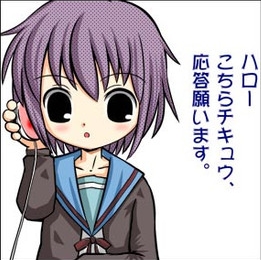
This past week, an interesting question was posed to me about the connection between anime fans and autism. Lauren Orsini, the Otaku Journalist, spoke to me about how anime fans with autism tend to enjoy the medium because of its strong visuals. She asked me if there were any studies involving this. Coincidentally, a couple of days later, one great gem of an article on Disney being used to fight autism appeared and it got me thinking.
The New York Times article chronicles a family’s struggle (most notably, the father) to connect with their autistic son. The son became autistic at age 3, but grew to love Disney cartoons and can recall many famous lines spoken by several characters from the movies. When he started to talk legibly because of his passion for all things Disney, the family was elated. However, it was far from over as the family had to deal with school politics, the stigma associated with mental illness, and possible setbacks to get their son to be able to grow into an independent young man.
Here’s an excerpt that speaks to the wonders of imagination:
“Owen has been whispering under his breath to sidekicks for years, having them guide him as he faces challenges. He is developing a version of “inner speech,” something that typical people develop as children to “think through” behavior and plan actions, the core cognitive processes of executive function, which are thought to be deficient in autistic people. Lately, Owen has let us in on it. At our prompting, he tells us how various sidekicks would solve his problems, quell his fears. He does it in the characters’ voices, seeming to channel insights that are otherwise inaccessible to him. Griffin tells the group how he has recently channeled Rafiki’s voice on why change is so hard and how we manage it, and Jiminy Cricket’s on the meaning of conscience and how to converse with that “voice in your head.””
Isn’t it amazing how he uses Disney characters as spiritual mentors to guide him to do the right thing in school and in life? The father said that he talked like Iago, the parrot from Aladdin, to get through to Owen once and he responded back normally. The family and Owen’s therapist even rolled out a treatment plan that you can call “Disney therapy” to make use of his inner world.
The “inner world” is something that breeds the beauty of hidden potential. For autistic people, the real world can be frustrating. It’s unpredictable and they tend to go back things that are familiar. Their world is the “safest” one. There’s one anime series I followed that made me think about people who have that mindset and that is Love, Chuunibyou, and Other Delusions (aka Chu2Koi to fans). The main character, Rikka Takanashi, has an extremely wild imagination and her boyfriend, Yuta Togashi, wonders how she’s able to come up with new material in her head. If you think about it, the infamous “eighth-grader syndrome” has some similarities to autism as both can cause individuals to process feelings in an intense manner.
You could arguably say that Chu2Koi is one of the closest things we have to a study on anime fans and autism. The problem is that psychological studies on fandom are rare. There are two reasons for this – 1.) There’s not enough demand/money for them and 2.) People think fandom is a dumb thing to study. The thing is that fandom says a lot about someone’s character. Look at sports fandom and how it gets people to do amazing things. Fandom creates communities that can benefit the lives of others. If you want to really understand one’s personal development, a look at the context of what they are passionate about speaks huge volumes on why they behave and think the way they do.
That Disney/autism article should also be noted as a “study” on the connection between anime/manga fandom and autism. Here’s why – without Disney, we wouldn’t have anime or manga. Osamu Tezuka was inspired by Walt Disney’s works to create his own material. Disney’s accessible storytelling gave inspiration to many talents all over the world looking to make their own cartoons and comics. In return, anime and manga have given rise to a generation of people overseas that have created works with Japanese influence. This in turn inspires another generation of fans. It’s all about the circle of life.
Both these scenarios highlight the possibility of using imaginary characters to improve the mindset of autistic youth. A part of me thinks we can learn a thing or two from those with autism. Once in a while, we have to take a step back and reflect in our minds before moving forward.
To loosely quote Rikka, break your synapses and banish this world to build a better one.
Feel free to share the NYT article linked above. It’s stories like this that remind you how wonderful people can be. There’s also a manga on autism called “With the Light: Raising an Autistic Child” by Keiko Tobe, if you want to read a manga series that focuses on the struggles of families raising autistic children..
(c) Manga Therapy – Where Psychology & Manga Meet – Read entire story here.